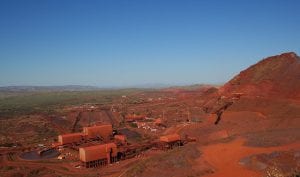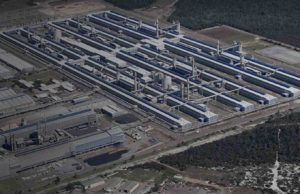Solar is starting to make its presence felt on the Australian grid.
In September, it delivered more output than wind energy for the first time. It is depressing wholesale prices in the middle of the day, occasionally sending them into negative territory in states like Queensland and Western Australia, and in some states like South Australia and W.A. it is sending grid demand to record low levels.
It is also sending the incumbent utilities into a blind panic about the potential impact on their business models, leading to claims that there is “too much solar” on the grid, and the risk of blackouts because of it.
In the last year, the share of solar generation across the main Australian grid was 4.4 per cent – mostly from rooftop solar; in South Australia it was 6.5 per cent, again mostly from rooftop solar. This share is expected to grow given the flood of new large-scale solar plants, and the continuing and record uptake of rooftop solar by homes and businesses.
That 6.5 per cent overall share is felt – for obvious reasons – during the day-time hours, where in South Australia it means that solar can account for up to 45 per cent of total generation. Adding to that the growing amount of utility-scale solar, the share is around 55 per cent in the middle of the day.
What happens when those amounts double and start to equal the amount of demand? That is what is forecast by the Australian Energy Market Operator to happen in South Australia from rooftop solar alone within a few years, followed by Western Australia and then other states.
Most of the thinking up until now has focused primarily on two approaches: curtailing the output of solar to ensure that there is enough thermal capacity or flexible generation running at the time, or sticking the excess into storage, either a battery or pumped hydro.
In Australia, AEMO and the local networks are also looking to the “orchestration” of distributed energy, which would likely combine both storage and curtailment, and some demand management.
But there may be a smarter option for large-scale solar that does not require storage and may result in significantly less curtailment, and see solar emerge as a fully flexible power source – against most expectations.
A newly published study from E3 on behalf of First Solar notes that wind and solar are now considered “must run” sources of electricity, basically because it is seen as not controllable, and anyway because the share of total output has been relatively small.
That approach, however, means that if there is ever too much wind or solar, the result is that the output is curtailed, either because there is too much output, or because the market operator wants to ensure that it has enough flexible capacity – normally through thermal generation and increasingly through storage – on the grid to keep the lights on.
The E3 study looks at the impact on a US network run by the Tampa Electric Company (TECO), which has peak demand of around 5GW, so it has an interesting parallel to South Australia (3.2GW) and the NEM (32GW).
The study suggests that if solar continued as “must take”, then its overall share of electricity generation would be capped at around 14 per cent, because of the deep “duck curves” it would create in the middle of the day, and the need to keep other generation on as standby.
If curtailment is allowed, then the overall share of solar could grow higher, but at levels of around 28 per cent overall share of generation then as much as 30 per cent of the solar output would be curtailed.
The study then suggests two better ideas:
Firstly, a process called “downward dispatch”, allowing the operator to schedule output from solar plants (in advance) that is lower than what they forecast.
This would enable the market operator to commit fewer thermal generators and would mean that the solar plants would provide some critical grid services, such as frequency regulation and spinning reserve, and it would provide these more quickly and more accurately than the traditional providers – gas units.
The study shows that this actually increases the quantity of solar delivered to the grid, rather than reduce it.
“It may seem paradoxical, but in our simulations, solar in Downward Dispatch operating mode has more opportunities to be curtailed, but less actual curtailment is observed.
 At 28 per cent solar penetration potential, Downward Dispatch would reduce expected curtailment by half – from 31 per cent, in curtailable operating mode, to 16 per cent – enabling solar to provide positive incremental value at higher solar penetration levels.
At 28 per cent solar penetration potential, Downward Dispatch would reduce expected curtailment by half – from 31 per cent, in curtailable operating mode, to 16 per cent – enabling solar to provide positive incremental value at higher solar penetration levels.
“Our simulation results show that, with the right economic dispatch rules, solar curtailment can be minimised by allowing solar to provide the most constrained grid services at key times.”
But it has an even better idea. By operating in Full Flexibility mode, which combines both “footroom” and “headroom” for the market operator, the amount of solar that is actually curtailed is reduced even further, to around 11 per cent
 This has multiple benefits: It increases the value of solar, and makes ramping much more manageable for the grid, and it actually results in more solar being used, and less thermal generation. In short, it is another step towards smarter, cheaper, cleaner, and faster power systems.
This has multiple benefits: It increases the value of solar, and makes ramping much more manageable for the grid, and it actually results in more solar being used, and less thermal generation. In short, it is another step towards smarter, cheaper, cleaner, and faster power systems.
“The provision of balancing services from solar plants allows thermal generators to operate more efficiently by reducing the need for cycling and load following services, resulting in less fuel consumption,” the report says. “This also avoids commitment of inefficient thermal generation, reducing curtailment of solar during times of overgeneration.”
“Flexible solar reduces uncertainty, enabling leaner operations and providing significant economic value,” the study says.
“At penetration levels exceeding 20 per cent on the TECO system, solar curtailment can be reduced by more than half by moving from the Curtailable to the Full Flexibility solar operating mode. This results in significant additional value due to reduced fuel costs, operations and maintenance costs, and air emissions.”
Now, there are all sorts of potential complications here, particularly for those solar farms already in production. A solar farm might be dependent on renewable certificates, of a fixed contract with an off-taker, and may not take kindly to this change in focus, which hitherto has been dependent on producing as much as possible.
But it could be a model for the future, and worth thinking about as Australia seems destined to double and then treble its solar production and moves towards those levels of solar generation where curtailment could be an issue.
Curtailment already is emerging as an issue in wind energy in South Australia, which provides more than 40 per cent of its annual generation. But even this curtailment – currently running at less than 5 per cent – may be addressed by new systems management protocols and other new technology.
It serves to highlight that there is more than one way of thinking about the grid. The performance of the two big batteries that have recently been installed in Australia, the Tesla big battery in South Australia and the Newman battery in W.A., shows how preconceptions about that technology have been rapidly debunked.
They can do more than what was expected of them – faster, cleaner, more accurately and more cheaply than thought. But wind farms and solar farms have a few tricks of their own, including managing frequency control, if the market allows them to use such assets.
 And this is important. Huge investments are being proposed for storage, but what if this investment could be reduced because it was discovered there was a cheaper and smarter way; use the smarts and flexibility of the solar farms, as illustrated in this study, and the wind farms.
And this is important. Huge investments are being proposed for storage, but what if this investment could be reduced because it was discovered there was a cheaper and smarter way; use the smarts and flexibility of the solar farms, as illustrated in this study, and the wind farms.
It’s worth mentioning here that curtailment does not just happen to wind and solar. Coal has been curtailed for decades, mostly because there has been little demand in the middle of the night. It is regularly curtailed due to network constraints. In France, nuclear has been curtailed to provide some of the same flexibility being talked about in this document.
And spinning reserve in needed, too, for fossil fuel generators. In W.A., to back up the single generator producing power, they needed to have two extra units on at any time. The new battery has removed that need, saving fuel costs, emissions and maintenance.
And even if some curtailment is required – and this occurs in any off-grid system where too much solar exceeds the capacity of storage – then the costs of wind and solar are likely to come down so much that it won’t matter. It’s just a lot smarter, and still cheaper, cleaner and more reliable, than what we have now.










